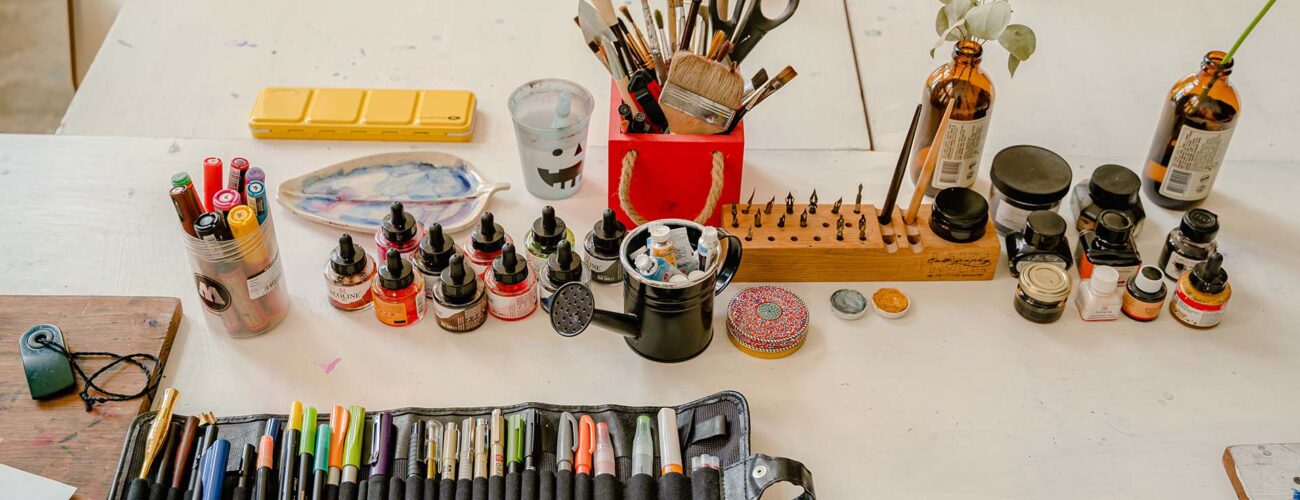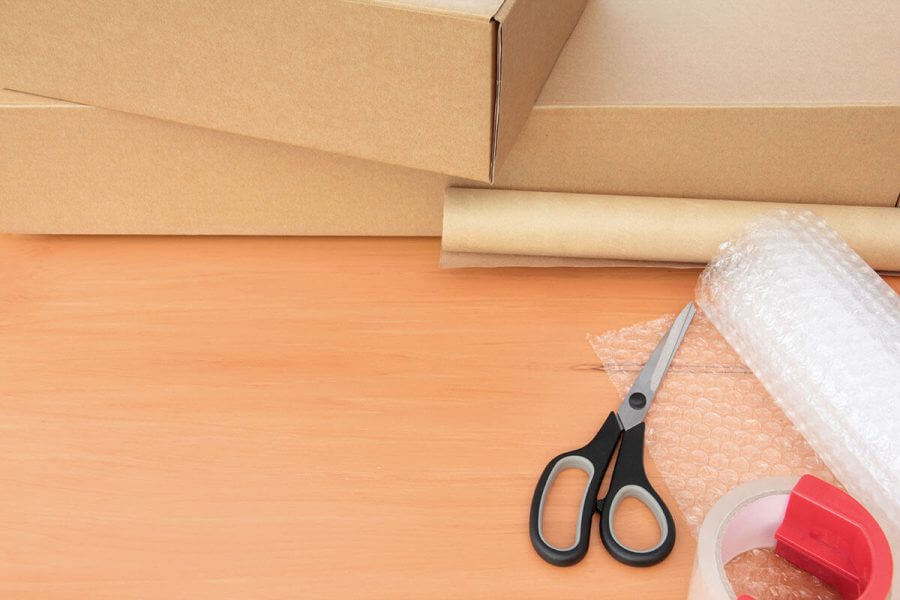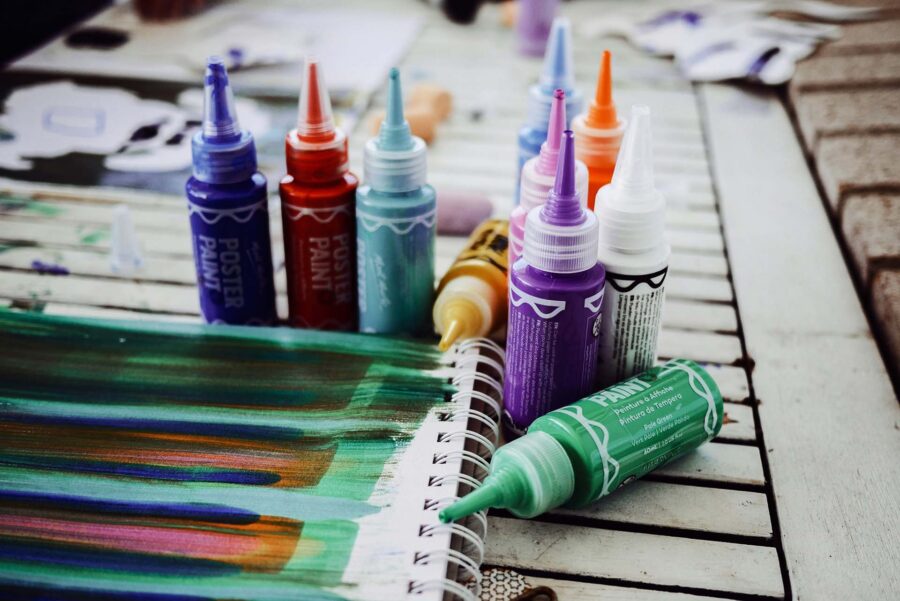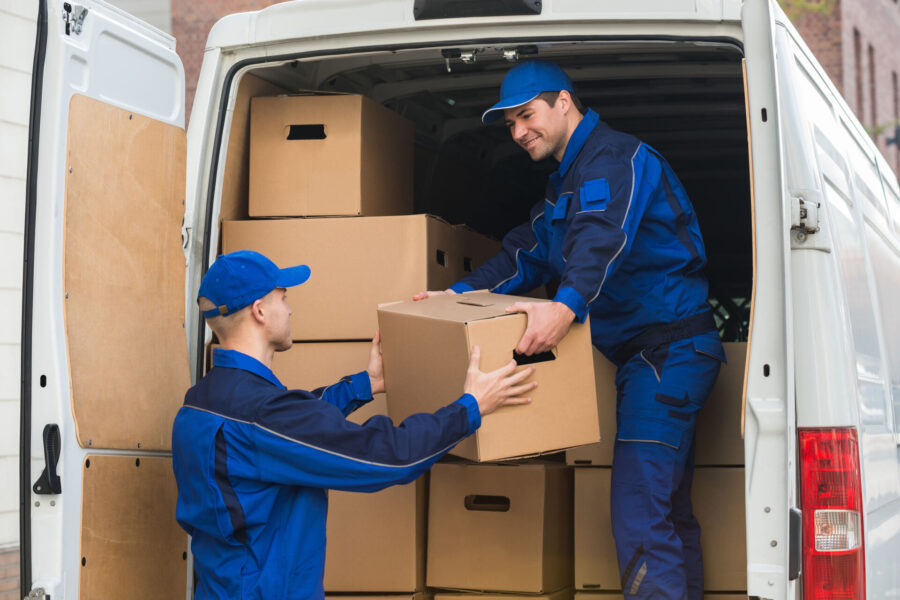

How to Pack Craft Supplies When Moving Across the Country
Posted in How-to on November 27, 2023
Moving cross-country brings a whirlwind of emotions and tasks. For crafting enthusiasts, ensuring their cherished supplies travel safely is paramount. If you’re wondering how to pack craft supplies effectively for such a significant move, you’re in the right place. Our guide will illuminate each step, ensuring your creative treasures arrive undamaged and ready to inspire once more.
Proper storing of your valuable possessions is vital to prevent damage during relocation. To ensure a smooth boxing-up process, you’ll require specific materials tailored for fragile and varied items. By following our guide on how to pack art supplies for moving, you’ll have a comprehensive roadmap. Remember to label each box and maintain a detailed inventory. For a seamless experience, consider hiring professionals, allowing them to elevate the safety and efficiency of your move.
Why Proper Packing Is Crucial
Craft supplies, with their innate fragility, diverse sizes, and often significant value, demand meticulous care during relocation. Each bead, thread, or paint tube holds not just monetary worth but also an integral part of your creative journey.
Proper organization of the boxing-up process becomes especially crucial for long-distance moving, where the chances of relocation mistakes, mishandling, or damage increase. However, ensuring each item is appropriately packed is more than just a good organization. It’s about preserving the quality and integrity of goods that fuel your creativity.

Materials You’ll Need for a Smooth Boxing-up Process
Keep in mind that different packing materials play a pivotal role in any moving endeavor, especially when it comes to safeguarding precious and fragile items like art goods. The right materials can be the difference between your treasured items arriving in pristine condition or being damaged during transit. Here’s a list of materials that are essential for a stress-free relocation:
- Bubble wrap – offers cushioning for delicate and fragile items.
- Clean paper – provides a buffer, preventing scratches or abrasions between items.
- Zip bags – ideal for categorizing and protecting small, easily lost pieces and preventing leakage.
- Sturdy plastic containers – these are essential for containing liquids or items that need additional protection.
- Durable tape – ensures boxes remain securely sealed during transit.
- Markers – for clear labeling of the crates and bags, helping in quick identification and unpacking.
While the importance of these materials can’t be overstated, sourcing them doesn’t have to be a challenge. Most of these essentials can be procured from local supply stores or hardware outlets. Otherwise, if you opt to get professional packing assistance, you won’t have to get any of the materials yourself. Everything you need is included in the service. Remember, investing a bit more in high-quality materials upfront can save a lot of relocation stress and potential loss in the long run.
Types of Craft Supplies and Specific Packing Requirements
Crafting enthusiasts often curate a diverse range of supplies, with each piece holding a unique place in their creative arsenal. From vibrant paints and delicate fabrics to intricate beads and versatile paper varieties, the spectrum is vast and varied.
However, this diversity in crafting supplies means that a one-size-fits-all packaging won’t suffice. Paints, for instance, may need leak-proof containers, while fabrics benefit from wrinkle-free packing.
Beads, being small and easily scattered, demand secure and clear containers, whereas paper and sketches need flat surfaces to prevent bends and creases. Recognizing these distinctions and adapting unique packing strategies for each type is essential to ensure their safe and organized relocation.

How to Pack Craft Supplies – A Comprehensive Guide
Craft supplies, whether it’s your livelihood or a passionate hobby, are delicate, varied, and often hold sentimental value. Ensuring they reach your new home safely is more than just a logistical need – it’s preserving the essence of your creativity.
Just as you would take time to choose the right materials for your projects, the same meticulous attention is required when storing these treasures for relocation. Inadequate packing can result in damaged items, lost materials, or even a stalled creative process.
By following this ultimate guide, you are allowing your artistic endeavors to continue without a hitch. The proper boxing-up process can’t be overstated, so let’s delve into how it’s done right.
Sort, Categorize, and Prepare the Supplies for Packing
This step is crucial because it simplifies the packing process, ensuring similar items are stored together. Tips for categorizing your goods include grouping items based on their type, use, or material. For instance, all fabrics can be grouped together, while adhesives have their separate section.
Equally vital is the process of downsizing. Relocation offers a golden opportunity to assess your collection. Decide on items that are still usable, ones you can donate to platforms like Freecycle.org, and those that need to be thrown away. This not only reduces the volume of items to be moved but can also lead to a more organized crafting space in your new location.
If you’re not sure whether to keep or throw away something, here are a few things to consider when decluttering your crafting goods.
Storing Small Items Together
Small craft items like beads, buttons, and sequins can easily get lost or mixed up during a move. The key here is to pack these small, loose items securely. Using zip bags or small containers with secure lids can be immensely helpful.
Label each bag or container so you instantly know its contents. By doing this, you also ensure that you can quickly locate and utilize them in your new space without unnecessary hassle.
Securing Paints and Liquids
Liquids, especially craft paints and glues, can be notorious during a move. Spills can not only ruin other craft supplies but can also damage other household items. It’s paramount to ensure lids are tightly secured.
Wrapping the mouth of the bottle with plastic wrap before screwing the lid on can offer additional spill-proof security. For extra protection, consider placing these bottles in zip bags, ensuring any accidental spill is contained.

Wrapping Fabric and Yarn
To keep fabric and yarn clean and wrinkle-free, roll them neatly. Use plastic wrap or bags to cover them, which will protect against dust, moisture, and potential spills. For yarn, ensure the ends are tucked in to avoid tangling.
Packing Paper and Sketchbooks
Craft papers, especially those used for sketches and designs, are prone to bends and creases. To prevent bending and creasing, place sheets of cardboard between pages or around sketchbooks. You can also use plastic covers for added protection against potential water damage or spills. If you have multiple papers, consider bundling them together with a soft ribbon or string.
Boxing up Tools and Machines
Packing tools and machines require a bit more attention. Sharp or pointed tools like scissors and cutters should be wrapped in cloth or bubble wrap, ensuring they won’t pierce through boxes or injure someone handling them.
For machines, refer to their original packaging if you still have it. If not, ensure the machine is well-cushioned in the box, with no room to move around. Also, remember to secure any moving parts.
When boxing up sewing machines or Cricut cutters, it’s a good practice to note down any specific settings so you can quickly set them up again in your new crafting space. Ensure that the integrity and settings of these machines are maintained for a smooth transition.

Label Your Boxes and Take Inventory of Your Goods
Knowing exactly where each item is located makes unboxing after a move so much easier. Label each box clearly, specifying its contents, from “Yarns & Threads” to “Beads & Embellishments” or “Paints & Brushes.” The more specific you are, the better. For an added layer of organization, consider using color-coded stickers for different types of supplies.
Alongside this, maintain a detailed inventory list. This list not only helps you track each bead and bobbin but also ensures you can quickly resume your craft projects in your new space without hunting for items.
Additional Tips That Could Make This Process Smoother
Beyond the foundational packing strategies, a few additional pointers can make your move even easier. Firstly, stay consistent with your boxing-up pace, aiming to tackle a specific category of craft supplies each day. This method ensures you don’t hit a last-minute rush and compromise the safety of your items.
Moreover, the concept of a “first-day craft box” can be a game-changer. Just as some people have a first-night box with essentials for their new home, crafters can benefit from a similar idea. This box should contain the essentials you’ll need to dive back into your craft as soon as you arrive, whether it’s to unwind or fulfill a client’s order.
Having immediate access to your crucial tools and materials will make the transition feel seamless and ensure your creative flow isn’t interrupted by the chaos of the relocation to the new home. And on the off chance that something goes missing or is left behind, don’t fret. Stores like The Woodturners Catalog offer a wide variety of crafting supplies, ensuring you can quickly replenish any lost items and keep your creative momentum going.

Hire Cross Country Movers and Give Your Creativity New Dimensions
At Cross Country Movers, we understand the intrinsic value of your possessions and the importance they hold in your creative journey. With our specialized cross-country moving services, we’re committed to ensuring every bead, brush, and spool reaches your new destination just as you left them.
As you embark on this new chapter, let us glide through the relocation like a swift and colorful brushstroke, bringing the smooth transition your creativity deserves. Ready to give your artistry new dimensions in a different locale? Contact us today and watch us shake your world with precision and care.
FAQ
Is It Worth Moving All My Craft Supplies, or Should I Consider Donating Some?
It depends on the emotional and practical value of the items, as well as the costs and logistics of moving them. If you have supplies that you haven’t used in a long time or don’t see yourself using in the future, it may be worth considering donating them to local schools, community centers, or budding craft enthusiasts. This not only reduces moving bulk but also brings joy to others.
What Are the Essential Packing Materials Needed for Craft Supplies?
You’ll need sturdy boxes, bubble wrap for delicate items, zip bags for small items, plastic containers with tight lids for liquids, labeling materials, durable tape, and possibly plastic wraps or bags for fabrics and yarns. Tissue or packing paper can be useful for padding and wrapping fragile items.
How Can I Prevent My Paints and Liquid Supplies From Leaking During the Move?
Ensure lids are tightly secured. Consider using plastic wrap around the bottle opening before sealing it. Placing bottles in zip bags or sealable plastic containers can also help contain any potential leaks.
What's the Best Way to Keep My Fabric and Yarn Wrinkle-Free and Clean?
Roll fabrics and yarns instead of folding them. Use plastic wrap or bags to shield them from dust, moisture, and potential spills. Ensure the ends of yarns are tucked in to prevent tangling.
How Should I Pack My Fragile Craft Items Like Glass Beads or Ceramic Pieces?
Wrap each item individually in bubble wrap or packing paper. Use sturdy boxes and ensure there is padding at the bottom. Fill any empty spaces in the box with crumpled paper or foam peanuts to prevent items from shifting.
Do I Need to Disassemble My Craft Machines Like Sewing Machines or Cricut Before Moving?
Consult the user manual for each machine. In most cases, it’s advisable to secure moving parts and pack machines in their original packaging if available. If not, ensure they are well-cushioned in a sturdy box.
How Can I Keep My Craft Supplies Organized So They're Easy to Find After the Move?
Label every box clearly with its contents and possibly the room it belongs to. Consider creating an inventory list. Group similar items together, and use clear containers when possible so you can easily see what’s inside.
What Should I Do to Safely Pack Sharp Objects Like Scissors and Needles?
Wrap sharp objects in cloth or bubble wrap, ensuring pointed ends are covered. Use protective covers or sheaths if available. Store them in hard containers to prevent them from piercing through other items or the box itself.






